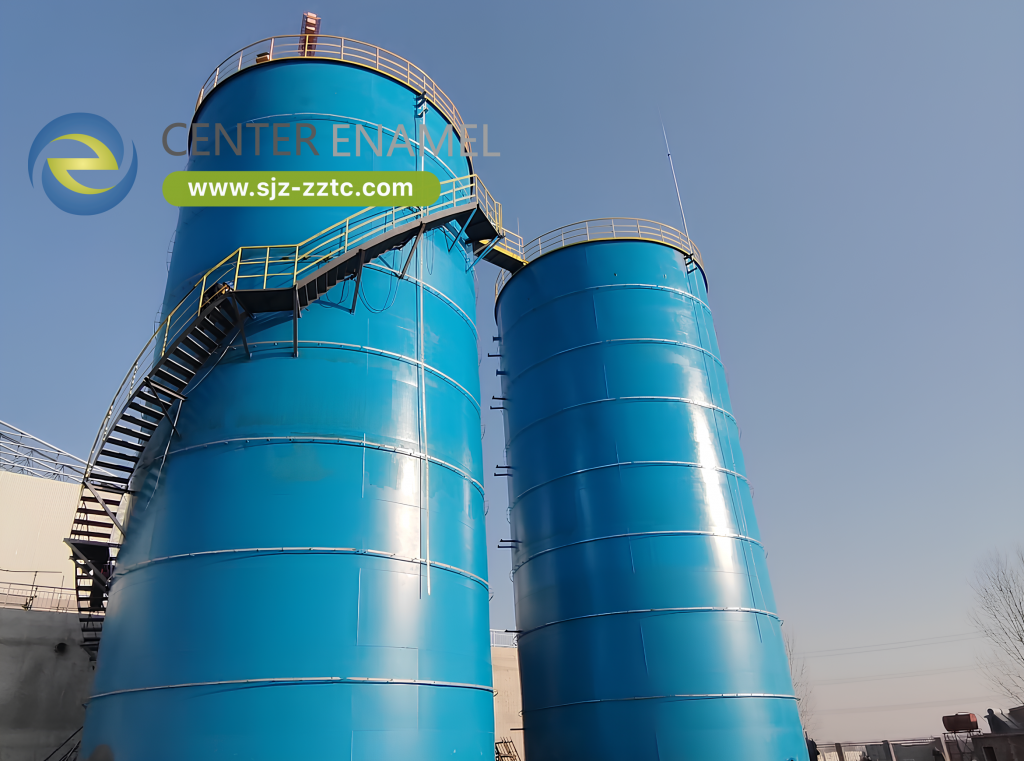Internal Circulation Reactors for Dairy and Cheese Factory Effluent | Center Enamel

Dairy and cheese production generate substantial volumes of wastewater that contain fats, proteins, lactose, and other organic compounds. These constituents, if not properly managed, can contribute to environmental pollution, including oxygen depletion in receiving waters and increased biochemical oxygen demand (BOD). Moreover, the presence of suspended solids and nutrients can lead to biofouling and operational inefficiencies in downstream treatment processes. Traditional treatment methods often fall short in addressing these challenges, necessitating innovative reactor designs that can cope with variable loads and ensure effective degradation of organic matter.
Center Enamel offers advanced internal circulation reactors (IC reactors) designed specifically to manage and treat the complex effluent streams produced by dairy and cheese factories.
Internal circulation reactors represent an advanced solution for high-strength industrial wastewater treatment. Unlike conventional reactors, IC reactors employ a two-phase process designed to optimize microbial activity and enhance biogas production while effectively reducing organic load. The system achieves this by maintaining a controlled internal circulation that facilitates the mixing of biomass and substrates, thereby promoting efficient anaerobic digestion.
Key characteristics of internal circulation reactors include:
- Enhanced Mixing Efficiency: The internal circulation mechanism ensures that microbial populations are evenly distributed throughout the reactor. This consistent mixing is critical for maintaining optimal contact between microorganisms and organic substrates.
- Improved Organic Load Reduction: By promoting a high degree of contact between the wastewater and the microbial consortia, IC reactors achieve significant reductions in chemical oxygen demand (COD) and BOD levels.
- Adaptability to Variable Loads: Dairy and cheese effluent can exhibit significant fluctuations in organic content. The design of IC reactors allows for stable operation despite these variations, ensuring reliable treatment performance.
- Biogas Production: In addition to reducing pollutants, the anaerobic digestion process generates biogas, which can be captured and used as a renewable energy source. This not only offsets energy costs but also enhances the overall sustainability of the treatment process.
Benefits for Dairy and Cheese Factories
The implementation of internal circulation reactors in dairy and cheese manufacturing facilities offers several key benefits:
- Regulatory Compliance: IC reactors are engineered to meet or exceed international wastewater treatment standards. By effectively reducing COD, BOD, and suspended solids, these reactors enable facilities to comply with strict environmental regulations and discharge permits.
- Operational Efficiency: The enhanced mixing and circulation provided by IC reactors lead to more consistent treatment performance. This results in reduced downtime, lower maintenance requirements, and a more predictable operational profile, which is critical for facilities with continuous production schedules.
- Resource Recovery: The biogas generated during the anaerobic digestion process can be captured and utilized for on-site energy generation. This contributes to a facility’s energy efficiency and reduces reliance on external energy sources, ultimately lowering operating costs.
- Environmental Sustainability: By converting high-strength wastewater into less harmful effluent, IC reactors help reduce the environmental impact of dairy and cheese production. This contributes to improved water quality in local ecosystems and supports the broader goals of sustainable industrial practices.
- Scalability and Flexibility: Internal circulation reactors can be customized to accommodate varying scales of operation. Whether applied in a small dairy or a large cheese manufacturing plant, the modular design of IC reactors allows for future expansion and adaptation to changing effluent characteristics.
Center Enamel’s Expertise
With over 30 years of experience in industrial storage and wastewater treatment solutions, Center Enamel has established itself as a leader in engineering advanced reactor systems. Our internal circulation reactors are the result of extensive research and development, combining state-of-the-art design with practical insights gained from real-world applications. Key aspects of our approach include:
- Precision Engineering: We employ advanced computational modeling and simulation to optimize reactor design, ensuring efficient mixing, stable operation, and maximum biogas yield.
- Customized Solutions: We offer tailored reactor designs that address specific effluent characteristics and treatment goals.
- Quality Manufacturing: Our production facilities utilize fully automated processes and rigorous quality control measures, ensuring that every reactor meets international standards of reliability and performance.
- Sustainability Commitment: Center Enamel is committed to promoting environmental sustainability. Our reactor systems are designed not only to improve wastewater treatment efficiency but also to enhance resource recovery and reduce overall environmental impact.
Center Enamel’s internal circulation reactors offer a robust solution for managing high-strength wastewater, delivering significant reductions in organic load and enabling renewable energy recovery through biogas production. With a focus on precision engineering, customization, and sustainability, our reactor systems are ideally suited to meet the challenges of modern dairy and cheese production.
For facilities seeking to enhance their wastewater treatment capabilities and achieve long-term operational reliability, Center Enamel provides a proven, innovative solution. Contact us today to learn how our internal circulation reactors can be integrated into your operations, ensuring compliance with environmental standards and contributing to a more sustainable future.
